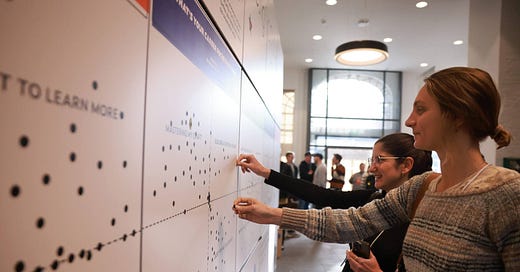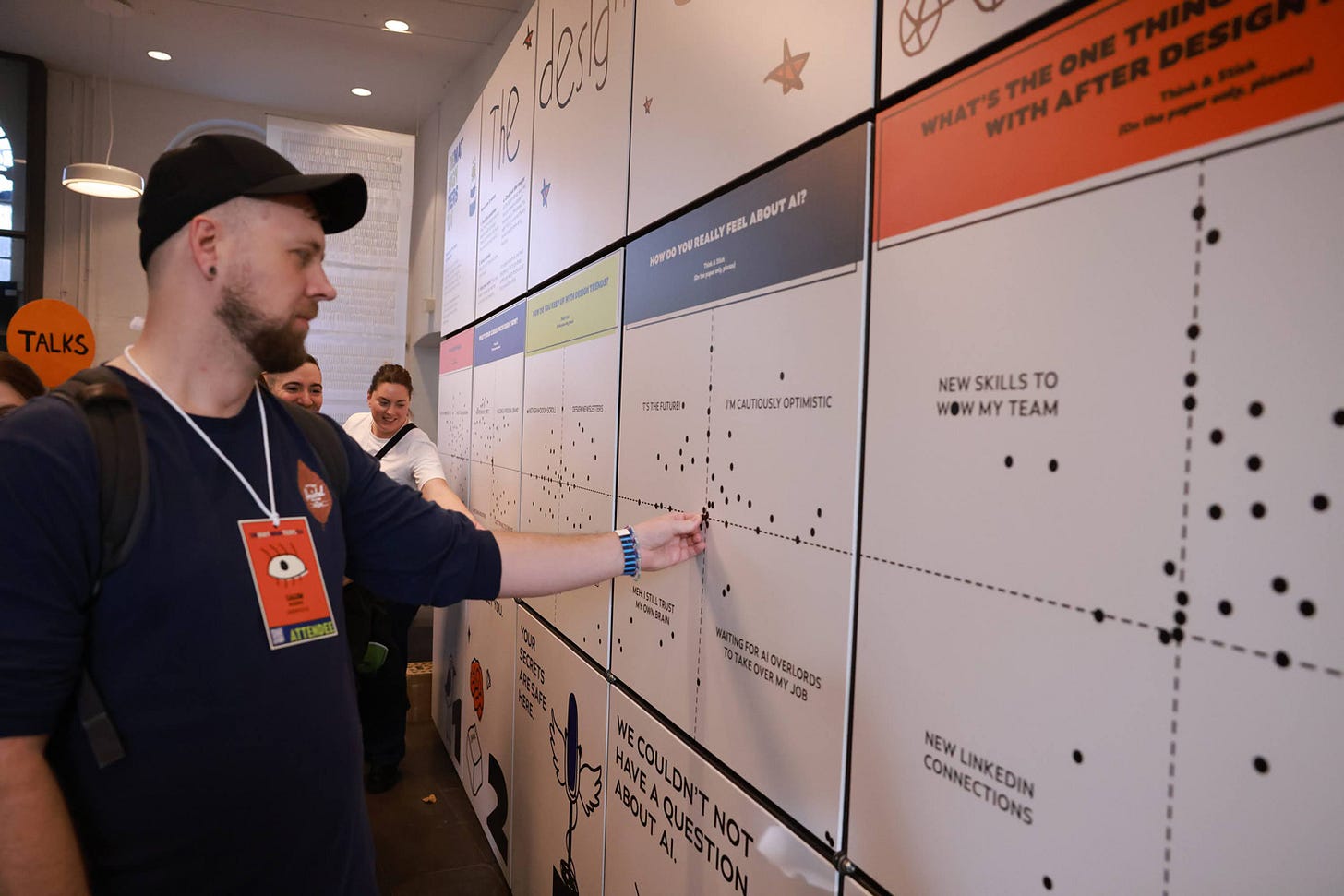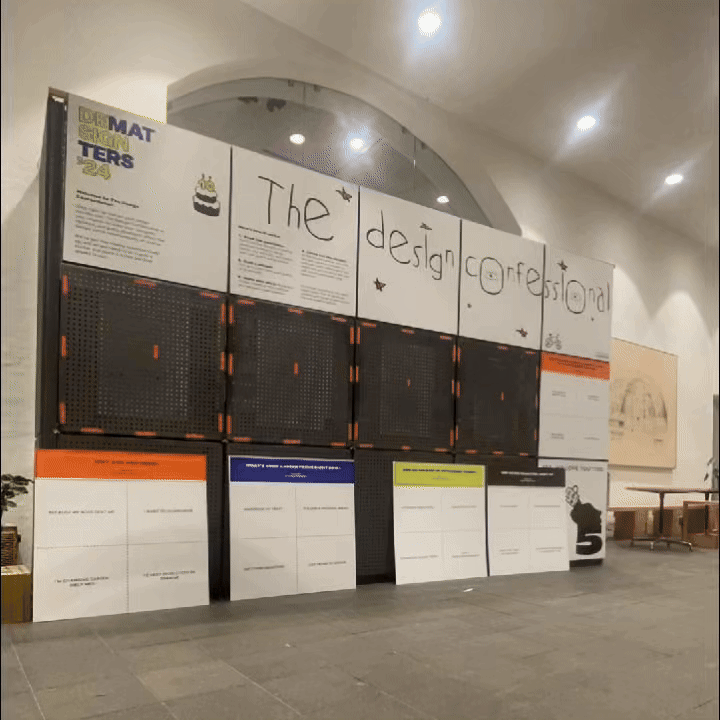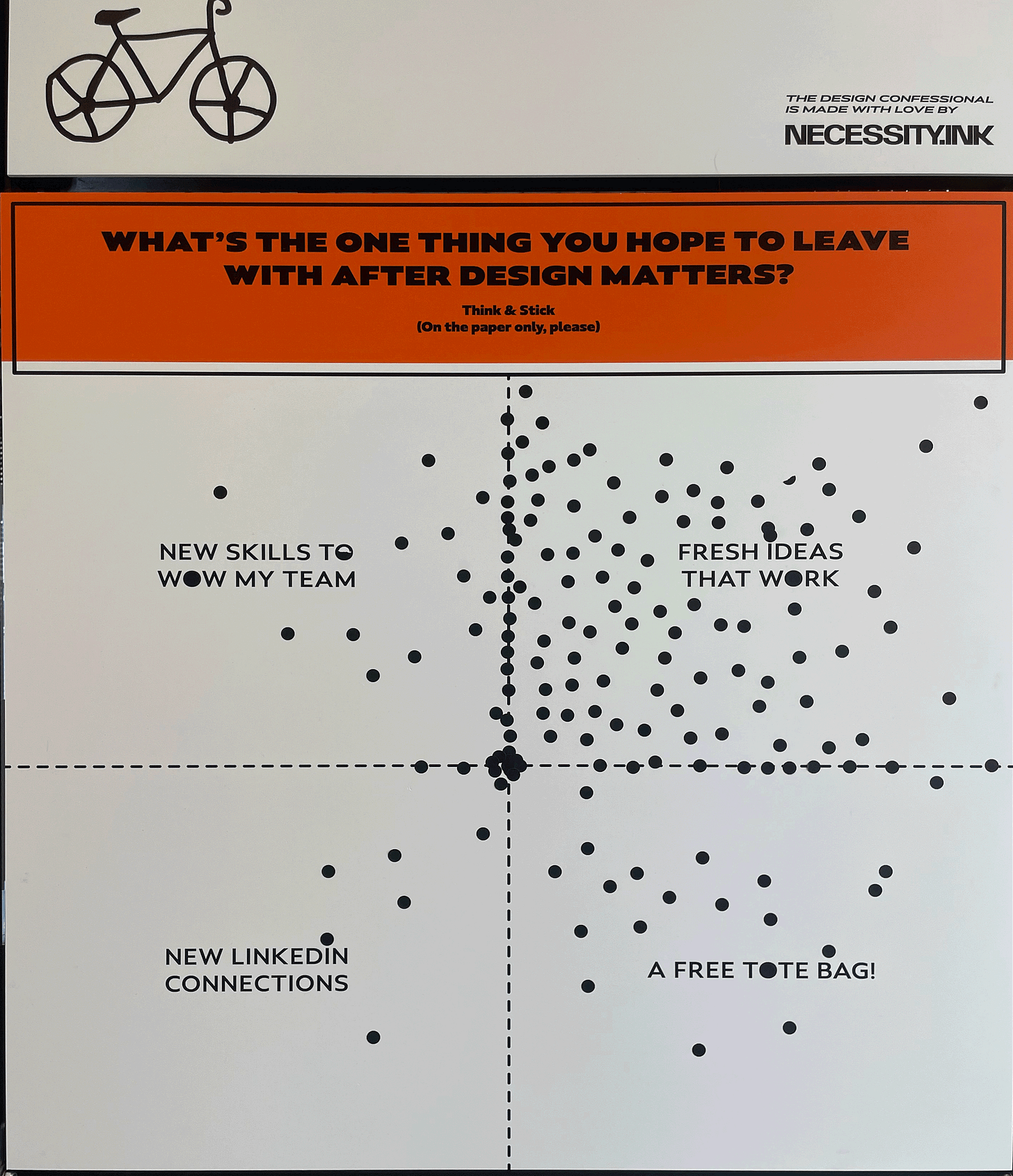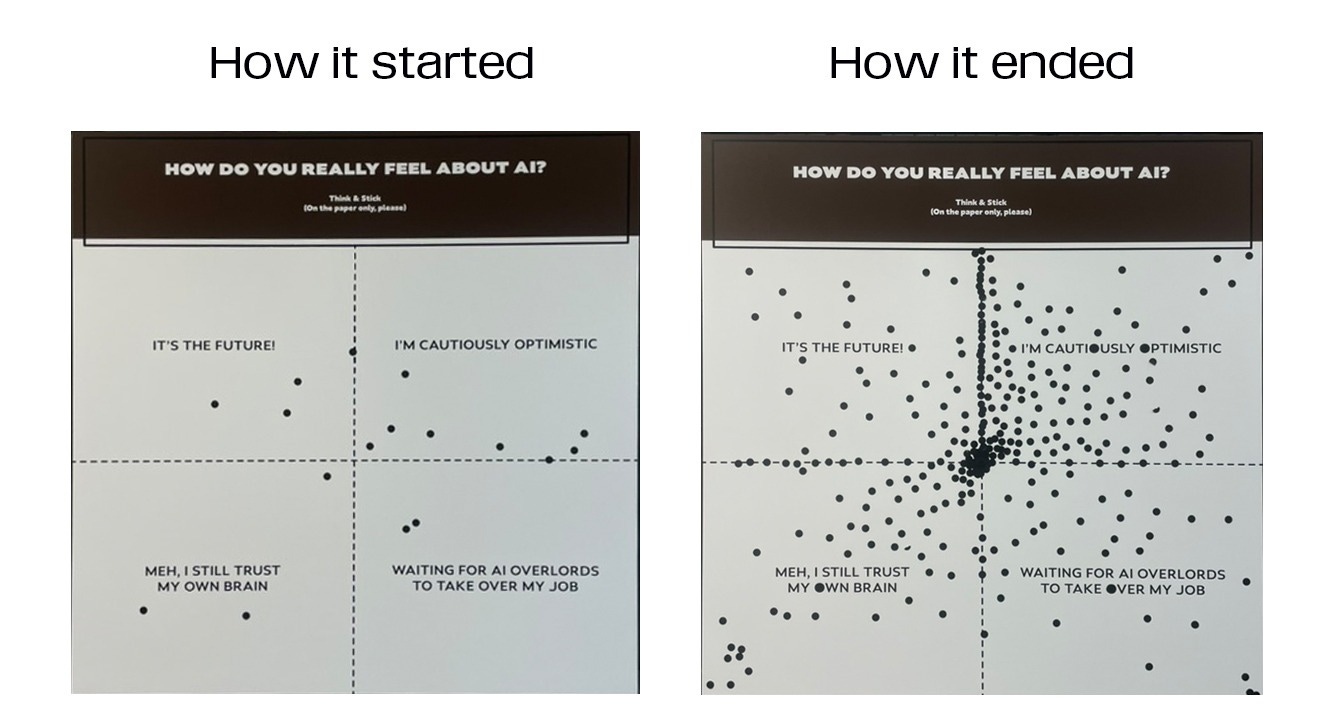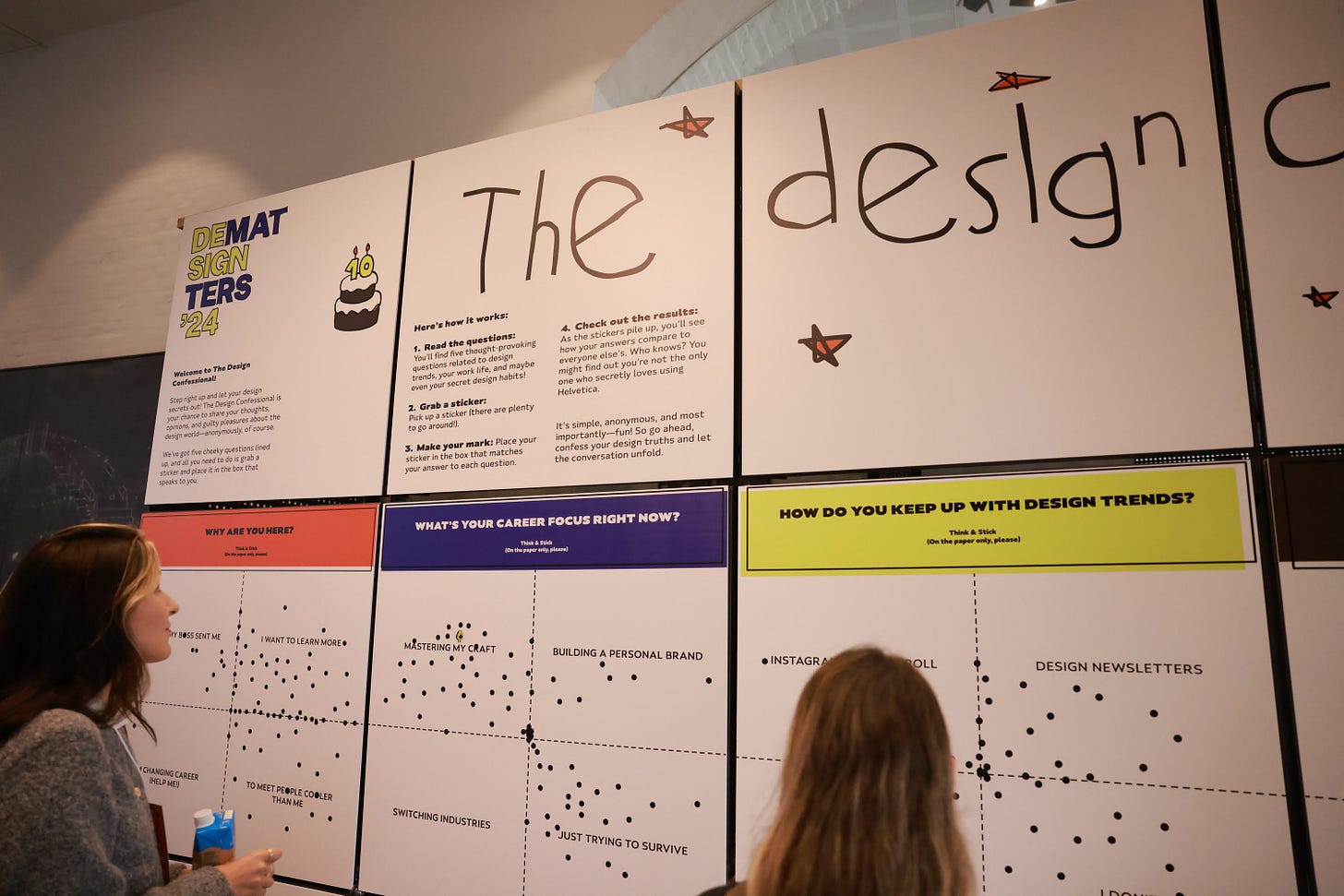#05 I've asked 1,000 people to confess their design sins, and this is what came out.
Turning Conference Attendees into Co-creators: The Design Confessional, my Latest Installation at The Royal Danish Academy
Let’s be honest: When was the last time you filled out a survey? Yeah, I thought so.
We’ve all been there, staring at those endless rows of checkboxes, wondering if anyone actually reads our responses. But what if I told you there’s a way to make data collection not just bearable, but also exciting?
Before I dive into the juicy confessions, I've got some exciting updates to share:
Coming soon: I'm crafting an e-book on the ABC of data art—a labour of love that will be available exclusively for my Substack subscribers.
A heartfelt thank you to everyone who stopped by the ‘Tokyo Love Story’ exhibition in London. Now we are looking for a public space to create an ad-hoc event and invite even more people to view the artworks. Hit me up if you know of any available space.
A special request: Living near an airport? I'd love to connect for an upcoming project! Drop me a line at hello@tizianaalocci.com or send me a message.
The Questionnaire Dilemma
I believe that at the intersection of art and technology lies a space where data becomes poetry. Or a survey. Gathering data is crucial for organisations to understand their audience, make informed decisions, and measure their effectiveness. However, the process of collecting this information can be challenging. It often needs significant time and money, which can strain already stretched budgets and staff.
The Design Confessional began with an intriguing challenge: How do you create an installation that engages conference attendees and invites them to shape the experience actively?
I partnered up with Design Matters Copenhagen to create a public installation to invite the audience to be more than just observers. Here, they become co-creators.
But, how? Keep reading…
Active Participation: The Key Differentiator
Imagine this: You’re standing in a packed conference hall, surrounded by the sound of the excited voices of the attendees. As you scan the room, your eyes are drawn to a massive, blank canvas stretching across the wall. As you approach, you notice small groups of people gathered around it. They smile, chat, get inspired and make new connections. Feels familiar?
This was the scene I envisioned when designing The Design Confessional. Instead of the usual boring survey, I proposed creating an interactive installation that merged art, design, and real-time audience input. Attendees became active participants, answering questions and placing stickers on the wall. With each interaction, the empty panels slowly transformed into an abstract, ever-evolving landscape of data.
As the day progressed, you could feel the energy in the room shift. People weren’t just passing by; they were stopping, discussing, laughing, and contributing their own pieces to the growing artwork. It was as if the wall had become a living, breathing organism, telling the collective story of everyone in the room. This wasn’t just data collection—it was a shared experience, a visual conversation that brought a survey to life in ways we never imagined possible.
The Process: what went well…
1. Picking the right questions
Even if data plays a crucial role in helping us make informed decisions and offer cultural experiences to a diverse audience, achieving true inclusivity presents significant challenges, as accommodating one group’s needs may exclude another. My goal was to put emphasis on active participation. Every interaction—from choosing the questions to the tone of voice—altered the artwork, making each person an integral part of the installation. This involved choosing five macro themes—yes, AI was one of them—and writing down questions (and answers) striking a balance between fun and insightfulness.
2. Sustainability
I blended data storytelling with low-fi, sustainable materials. This combination of data visualisation and tangible interaction transformed a routine exercise into a tactile, emotional experience. It demonstrated that high-tech concepts can be realised through accessible, sustainable means—a crucial consideration for designers working with limited resources.
3. Impact
The installation’s impact was incredible: over 1,000 attendees, both in-person and via live stream, engaged with the installation over the three-day event. More importantly, it created meaningful conversations about the intersection of design and its future, showing how low-fi interactive experiences like this can deepen audience connections in real-time. The data collected revealed some fascinating insights. For example, 40% of participants revealed cautious optimism about AI.
In terms of motivation, a whopping 61% of attendees came with the primary goal of learning. This demonstrates a strong desire for professional growth and staying updated in the field. Surprisingly, only 4% were looking to change careers.
…and what I learned from it
1. Sticky tape and stickers are never enough
I admit it. I made some wrong calculations and I ended up ordering too few stickers. A couple of hours into the event they were almost all gone. So I had to cycle back (literally) to the stationery store to get lots more stickers.
2. Embrace inclusivity challenges
Recognise that different approaches may be needed to reach diverse audiences, as one solution may not fit all. It’s important to maintain a balance between quantitative information and personal narratives. I wanted to make data feel personal and relevant by allowing participants to see their input directly affecting the artwork.
3. A collective effort
This is dataviz that listens, reacts, and responds to touch and thought alike. It reveals how the individual and the collective can coexist, merging personal experience with universal truths. This is the work I love making. None of this would have been possible without the exceptional team at Design Matters, and the amazing conference volunteers: you have been the stars of the event.
Now, tell me: Why do you go to design conferences?
Thank you for making it this far! :)
Till next time,
Tiziana

